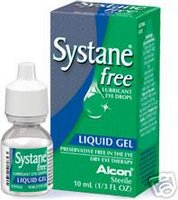
Alcon Recalls Preservative-Free Dry Eye Therapy
On behalf of Alcon, the Academy is alerting you to a voluntarily recall of Alcon’s Systane Free Liquid Gel eye drops. The recall follows reports from 11 consumers that the preservative-free liquid gel contained mold.
Alcon reports that due to the characteristics of these molds, the development of an infection is unlikely. Alcon has received no reports of fungal infections associated with the 11 reports. The company is voluntarily recalling Systane Free Liquid Gel because eye drops that become contaminated after opening the bottle may cause eye infections.
You should immediately stop using and dispensing Systane Free Liquid Gel. Shortly, you will receive in the mail recall information from a company by the name of Stericycle, Inc. Follow the instructions and return all trade sizes and samples of Systane Free Liquid Gel to the address provided. Alcon has written a
letter providing more details.
No other formulations of Systane lubricant eye drops are included in this recall. Alcon has determined that the cause of the problem is the specific formulation of Systane Free Liquid Gel, and is not the result of any manufacturing processes.
If you are contacted by a patient, request that they immediately stop using Systane Free Liquid Gel and recommend they call toll free (866) 608-3936 for instructions regarding returning the product and receiving a free bottle of the original formulation of Systane lubricating eye drops.
Visit the Systane Health Care Professionals
Web site for more information, including a
press release issued by Alcon.

